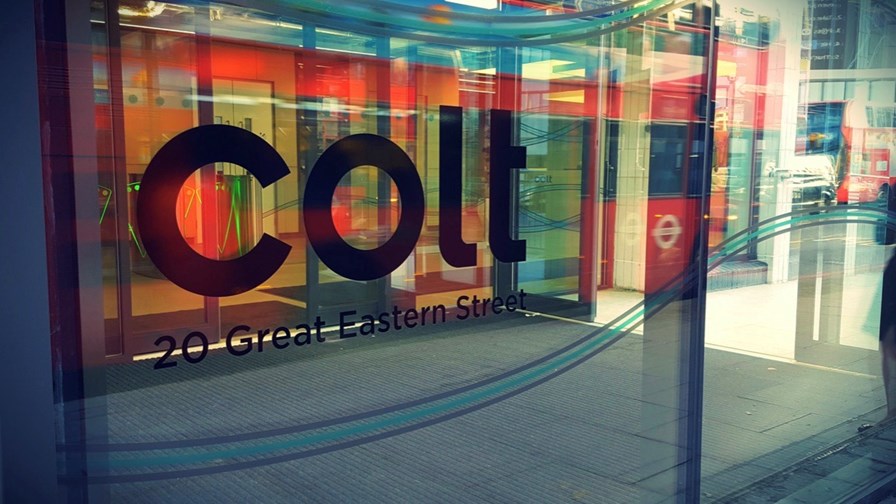
- Lumen Technologies has agreed to sell its EMEA infrastructure to Colt for $1.8bn
- Colt will get the full regional business if the deal goes through
- That would include terrestrial and subsea networks, datacentres and network technology
- Most, but not all, of the Lumen staff in the region would join Colt
UPDATED: Colt Technology Services lit up the European enterprise and wholesale networking sector on Thursday with news of an agreement to acquire for US$1.8bn the EMEA (Europe, Middle East and Africa) business and assets of Lumen Technologies, the US-based operator formerly known as CenturyLink that has been revamping its portfolio in recent years through a number of divestments.
According to the two companies, if the deal goes through, Colt would get Lumen’s regional business, including its terrestrial and subsea networks, datacentres, network equipment in the region, and “most” of the current staff. It would appear that the business in question generated about $164m in adjusted EBITDA in 2021.
If regulatory and local authority approvals are given, the deal is expected to close in late 2023. “This transaction would mark the next chapter in Colt’s exciting story of global growth and world-class innovation,” stated Colt’s CEO Keri Gilder.
“We’re deeply committed to building extraordinary connections for our people, customers and partners across our digital infrastructure. This acquisition would strengthen and extend these connections across existing and new geographies, helping us to accelerate growth and bring the power of the digital universe closer to our customers,” she added.
So far so good. According to Colt, the deal would extend its network into “additional countries, European cities and datacentres, offering businesses throughout Europe expanded fibre network connectivity” and provide it with “access to a full range of product solutions for diversified enterprise, hyperscaler, government and wholesale customers,” as well as “position Colt to meet growing enterprise and international IP traffic in EMEA via extensive terrestrial and subsea reach.”
So a very positive picture painted by Colt, as you would expect if it is to shell out $1.8bn.
But where are the details? How many new customers will it pick up? In which new countries will it have network assets and in which cities? How many staff will join and what do they do? How much overlap is there in the fibre maps? And is it getting some fantastic new management and data transport technology or legacy tech that will need replacing? This and many more questions are not answered in the announcement or in Lumen’s filings with the Securities and Exchange Commission (SEC).
They also weren't answered when Colt responded to TelecomTV's multiple questions about the details. All that Colt seems able to say in terms of the assets it plans to acquire is that it will get a "leading-edge transatlantic capability connecting North America to the UK and France, and a wider range of solutions, including datacentre colocation, managed hosting and cloud, traditional networking components and SD-WAN, a richer voice portfolio and a strong security proposition."
What we do know, though, is that Lumen’s EMEA assets comprise a collection of networks and businesses that came from a number of acquisitions, particularly that of Level 3, while Lumen’s website maps do, at least, suggest that the US operator has about nine of its own datacentres across Europe, in Germany (five locations), France, Belgium, the Netherlands and the UK.
And a Lumen announcement earlier this year that boasted of plans to expand edge computing services into Europe noted that Lumen’s EMEA assets comprise approximately 42,000 (67,000km) route miles of fibre that connect to more than 2,500 on-net buildings and 540 public and private third-party datacentres.
This seems like a bold move by Colt to gain scale, which is what is increasingly needed in the wholesale and enterprise data and IT services sector. And, as part of the deal, Lumen would become a customer and partner of Colt.
On this, Colt noted: "The two companies will look to build on an established strategic partnership, encompassing North American geographies, which will provide Colt with further economic coverage and SDN opportunities."
It added: "We now wait for regulatory approvals. It’s important to note that this proposed acquisition demonstrates a significant, long-term investment from Fidelity into the Colt business, and demonstrates a firm understanding in how we are driving growth opportunities." (Fidelity Investments took full control of Colt in 2015 when it spent £570m to increase its stake from 62% to 100%.)
For Lumen, the deal is the latest in a series of asset sales: It has already sold off US access network assets to private equity firm Apollo in a $7.5bn deal and has sold its Latin American business to Stonepeak for $2.7bn.
“We are continuing to execute on portfolio optimisation at Lumen, creating additional value for our shareholders by monetising non-strategic assets at accretive multiples,” noted Lumen president and CEO Jeff Storey, who is just about to retire and hand over to Kate Johnson. “This transaction would enhance our focus so we can invest more efficiently in our most strategic opportunities – our key enterprise and quantum fibre initiatives – and partner with regional leaders, like Colt in Europe and Cirion in Latin America, to continue serving our multinational enterprise customers.”
The announcement came as Lumen revealed third-quarter revenues of $4.33bn, down by 6% year on year. The company’s share price took a hammering following the publication of the results: It lost almost 19% of its value to $5.91 by Thursday lunchtime in New York. So far this year, Lumen’s share price has dropped by 54%. Maybe the strategy isn’t working? It looks like Kate Johnson has one helluva job on her hands.
- Ray Le Maistre, Editorial Director, TelecomTV
Email Newsletters
Sign up to receive TelecomTV's top news and videos, plus exclusive subscriber-only content direct to your inbox.




